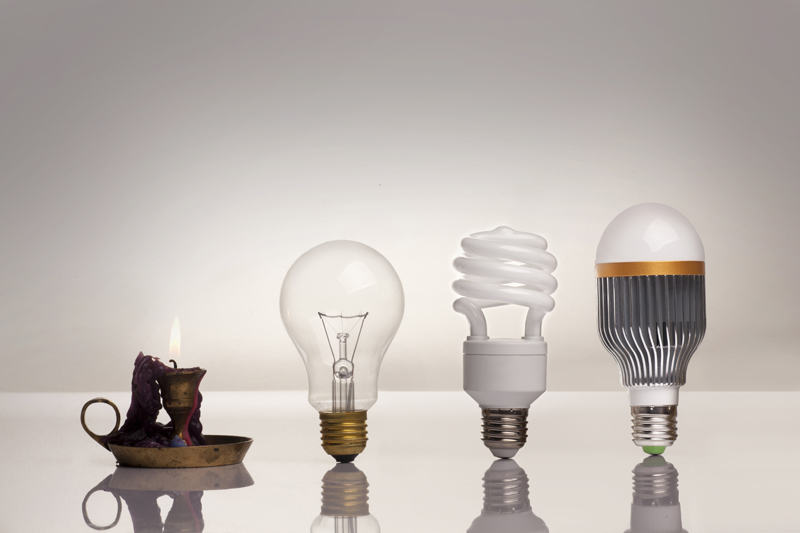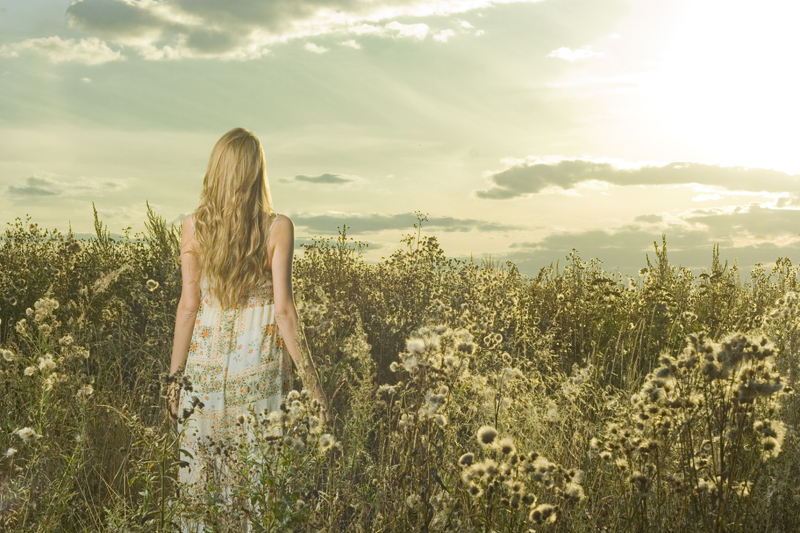Sewing and Daylight Illumination

Sewing anything can have a mountain of things to consider: finding coordinating or exact color matching thread, finding long sought after or acquiring a terrific fabric buy, just the right pattern or template, hopefully sharp dressmakers shears, rotary cutter or pinking scissors, enough or the right kind of pins or clips, pattern weights, favorite seam ripper, sewing machine in best condition, time enough to sew – the list of considerations is seemingly endless.
Wait, there is one more thought to add – enough lighting in the sewing space that will avoid eyestrain, shadow casting, and fabric color ambiguity.
Lighting a sewing space may be given only a cursory thought. Turn on the overhead ceiling light (usually an incandescent bulb or two encased in a protective glass dome) or switch on a nearby table lamp with light-limiting shade cover or balance an adjustable swing-arm desk lamp close to the sewing machine, perhaps drag over a torchiere lamp (upright, torch-like shape), sigh, usually any light is of course better than no light source at all.
Natural daylight is the ideal illumination for hand or machine sewing projects although it may not always be possible to have a sewing area next to or very near a source of natural glare-free light. Natural light streaming in from a window or patio door enveloping a sewing space allows for seeing true colors and surface textures of fabrics and threads. Glare and unbalanced light from incandescent shaded light bulbs can obscure the small details of hand or machine stitching and add to eye fatigue as eye muscles attempt to continually adjust to the best field of vision.
There are dozens of lighting types that can closely resemble natural daylight and can enhance the lighting needed for any type of sewing. Dimmable daylight-mimicking Light Emitting Diode (LED) lamps, broad-spectrum light bulbs (look for UV filtering), compact fluorescent (CFL) bulbs marketed as daylight or sunlight for instance.
The fabled prolific inventor Thomas A. Edison certainly transformed society with one of his many inventions - the practical electric light bulb, allowing for people to work, study, cook, read, sew, craft and much more without tending to the physical lighting limitations of the times (using candles, gas, oil lights) to extend the active hours sunlight afforded.
Today’s advanced lighting technologies can mimic the light properties of natural daylight brightening even the dimmest of indoor spaces and turning on with the press of a button, the merest soft touch to a touch-sensitive controlled lamp, using automated motion or voice-sensitive devices, or by the conventional flick of a wall switch.
Most common artificial lighting of the past - incandescent and fluorescent lighting, can over extended periods of time lead to headaches, eyestrain, and reduced mental alertness. Today there are many choices in lighting for both indoor and outdoor areas using new and advancing technologies. Why not light the way to a more enjoyable sewing experience by considering any of the new lighting options? There are adjustable floor models with a pivoting gooseneck, ultra-slim dimmable LED desk lamps (some with a USB charging port and magnification), well known OttLite (highest color rendering index), portable task lights, clip lamps and many more possibilities.
Whether sewing is seen as a relaxing hobby, engaged in for budget conscious economics, crafted for sellable art projects, as a full-time business endeavor, or simply for a supreme sense of accomplishment that comes from hands-on efforts, it is uniquely enduring, creative, highly personalized and best created and viewed under modern lighting conditions.
Sew happy, sew inspired.
Wait, there is one more thought to add – enough lighting in the sewing space that will avoid eyestrain, shadow casting, and fabric color ambiguity.
Lighting a sewing space may be given only a cursory thought. Turn on the overhead ceiling light (usually an incandescent bulb or two encased in a protective glass dome) or switch on a nearby table lamp with light-limiting shade cover or balance an adjustable swing-arm desk lamp close to the sewing machine, perhaps drag over a torchiere lamp (upright, torch-like shape), sigh, usually any light is of course better than no light source at all.
Natural daylight is the ideal illumination for hand or machine sewing projects although it may not always be possible to have a sewing area next to or very near a source of natural glare-free light. Natural light streaming in from a window or patio door enveloping a sewing space allows for seeing true colors and surface textures of fabrics and threads. Glare and unbalanced light from incandescent shaded light bulbs can obscure the small details of hand or machine stitching and add to eye fatigue as eye muscles attempt to continually adjust to the best field of vision.
There are dozens of lighting types that can closely resemble natural daylight and can enhance the lighting needed for any type of sewing. Dimmable daylight-mimicking Light Emitting Diode (LED) lamps, broad-spectrum light bulbs (look for UV filtering), compact fluorescent (CFL) bulbs marketed as daylight or sunlight for instance.
The fabled prolific inventor Thomas A. Edison certainly transformed society with one of his many inventions - the practical electric light bulb, allowing for people to work, study, cook, read, sew, craft and much more without tending to the physical lighting limitations of the times (using candles, gas, oil lights) to extend the active hours sunlight afforded.
Today’s advanced lighting technologies can mimic the light properties of natural daylight brightening even the dimmest of indoor spaces and turning on with the press of a button, the merest soft touch to a touch-sensitive controlled lamp, using automated motion or voice-sensitive devices, or by the conventional flick of a wall switch.
Most common artificial lighting of the past - incandescent and fluorescent lighting, can over extended periods of time lead to headaches, eyestrain, and reduced mental alertness. Today there are many choices in lighting for both indoor and outdoor areas using new and advancing technologies. Why not light the way to a more enjoyable sewing experience by considering any of the new lighting options? There are adjustable floor models with a pivoting gooseneck, ultra-slim dimmable LED desk lamps (some with a USB charging port and magnification), well known OttLite (highest color rendering index), portable task lights, clip lamps and many more possibilities.
Whether sewing is seen as a relaxing hobby, engaged in for budget conscious economics, crafted for sellable art projects, as a full-time business endeavor, or simply for a supreme sense of accomplishment that comes from hands-on efforts, it is uniquely enduring, creative, highly personalized and best created and viewed under modern lighting conditions.
Sew happy, sew inspired.

Related Articles
Editor's Picks Articles
Top Ten Articles
Previous Features
Site Map
Content copyright © 2023 by Cheryl Ellex. All rights reserved.
This content was written by Cheryl Ellex. If you wish to use this content in any manner, you need written permission. Contact Cheryl Ellex for details.







